The United States is home to a fascinating array of water snakes that have adapted to thrive in diverse aquatic environments across the country. From the cypress swamps of Florida to the clear streams of the Midwest, these remarkable reptiles play crucial roles in their ecosystems while displaying an impressive variety of behaviors, appearances, and survival strategies. Unlike their venomous lookalikes such as cottonmouths and copperheads, true water snakes are generally harmless to humans, though they may deliver a painful bite if threatened.
This article explores the rich diversity of water snakes found throughout America’s waterways, examining their unique characteristics, ecological importance, and the conservation challenges they face in a changing world.
The Northern Water Snake: America’s Most Widespread Aquatic Serpent
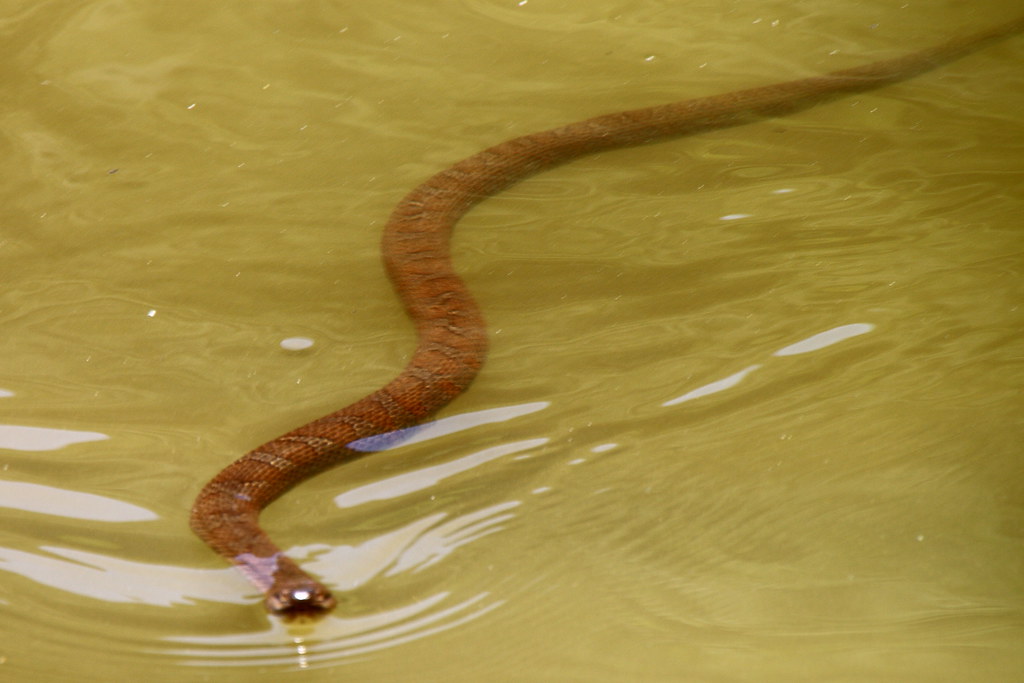
The Northern Water Snake (Nerodia sipedon) stands as perhaps the most commonly encountered water snake across the United States, with a range extending from Maine to Colorado and from southern Canada to Georgia. These adaptable reptiles can reach lengths of 24-55 inches and display remarkable color variations, from banded patterns of brown, tan, and reddish-brown to nearly uniform dark coloration, especially as they age. Northern Water Snakes are frequently misidentified as venomous water moccasins, leading to unnecessary killing despite their beneficial role in controlling fish and amphibian populations.
They typically inhabit a variety of freshwater environments, including lakes, ponds, rivers, and wetlands, where they can often be spotted basking on rocks, logs, or overhanging branches nearthe water’s edge. When disturbed, these defensive snakes may flatten their bodies and strike repeatedly, sometimes releasing a foul-smelling musk and feces as deterrents.
The Southern Water Snake: Master of Southeastern Waterways
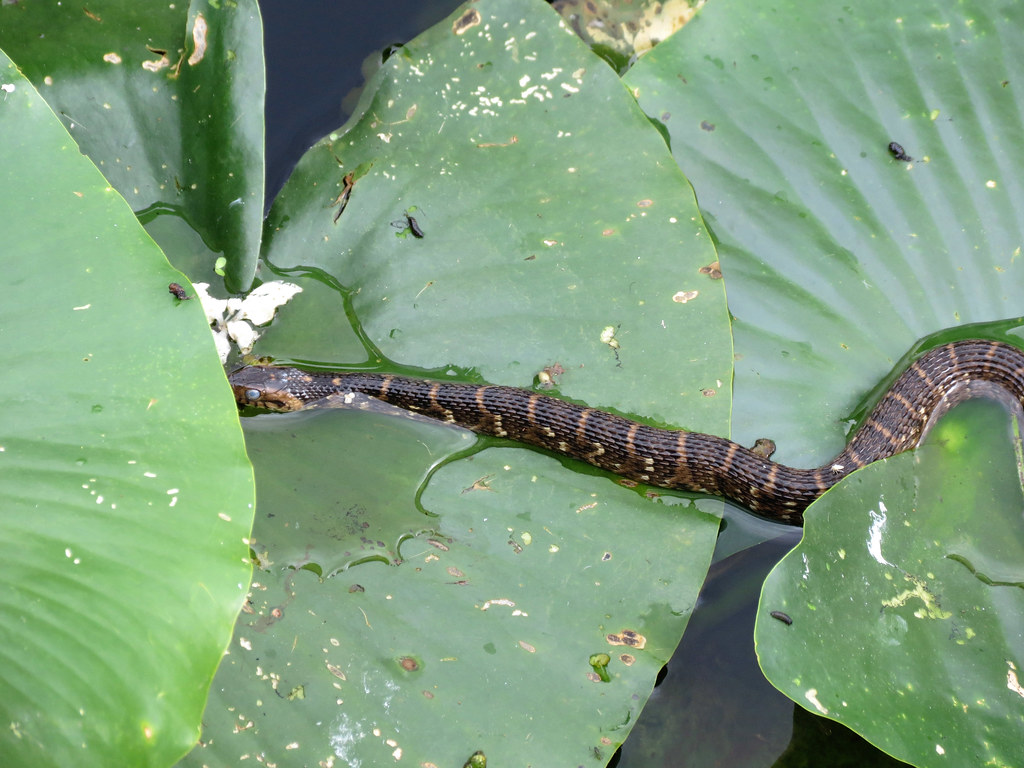
The Southern Water Snake (Nerodia fasciata) dominates the waterways of the southeastern United States, from southeastern Virginia through Florida and west to eastern Texas. This medium-sized water snake typically reaches 24-42 inches in length and displays distinctive dark crossbands on a background color ranging from gray and brown to reddish or yellowish. Unlike many of its relatives, the Southern Water Snake often ventures into brackish water environments where fresh and saltwater mix, demonstrating remarkable adaptability to varying salinity levels.
The species comprises three recognized subspecies—the banded water snake, the broad-banded water snake, and the Florida water snake—each with slight variations in pattern and range. Southern Water Snakes are primarily fish-eaters but will opportunistically consume amphibians, crayfish, and occasionally small mammals, using their quick reflexes to capture prey both in water and along shorelines.
The Diamondback Water Snake: Distinctive Pattern-Bearer of Central States
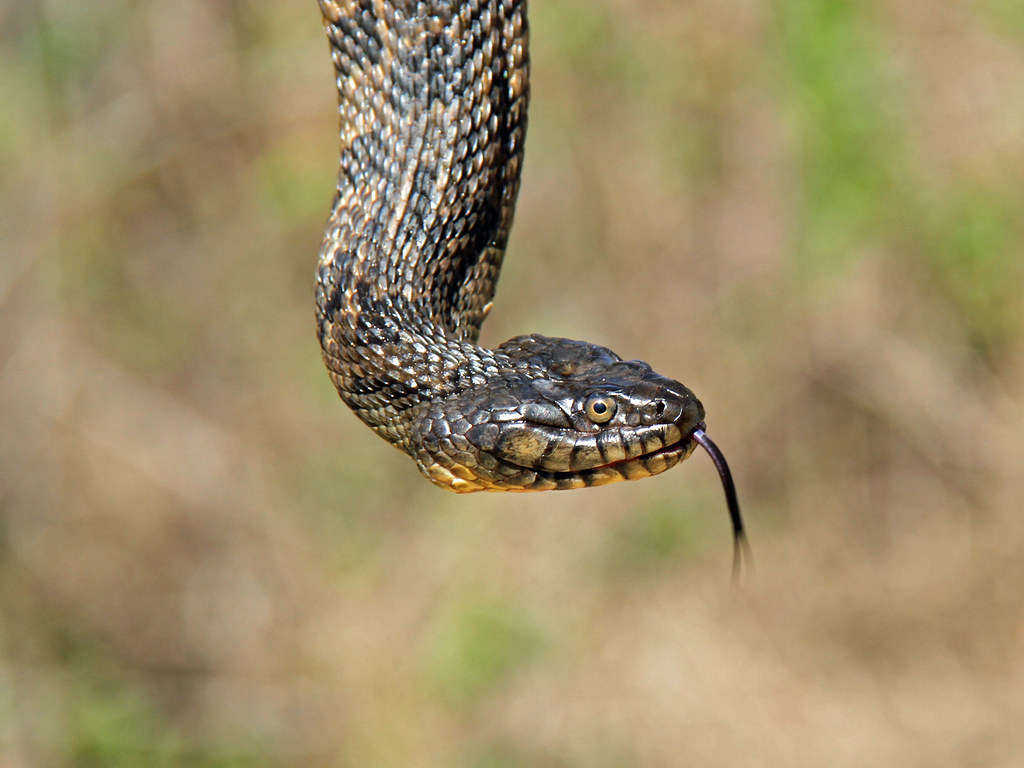
The Diamondback Water Snake (Nerodia rhombifer) stands out among America’s water snakes with its bold, distinctive diamond-shaped pattern running along its back, set against a background of olive, brown, or grayish coloration. This large water snake, which can reach impressive lengths of 30-60 inches, inhabits the central United States from Illinois and Iowa south through Texas and into Mexico, particularly favoring permanent water bodies with abundant fish populations. Diamondbacks are among the bulkiest of American water snakes, with females growing significantly larger than males—a common sexual dimorphism in the Nerodia genus.
These snakes are excellent swimmers and climbers, often found resting on branches overhanging water where they can quickly drop to escape threats or capture prey. Despite their intimidating size and defensive behavior when cornered, Diamondback Water Snakes are non-venomous and primarily beneficial, controlling populations of fish and amphibians in their aquatic ecosystems.
The Plain-bellied Water Snake: A Study in Regional Variation
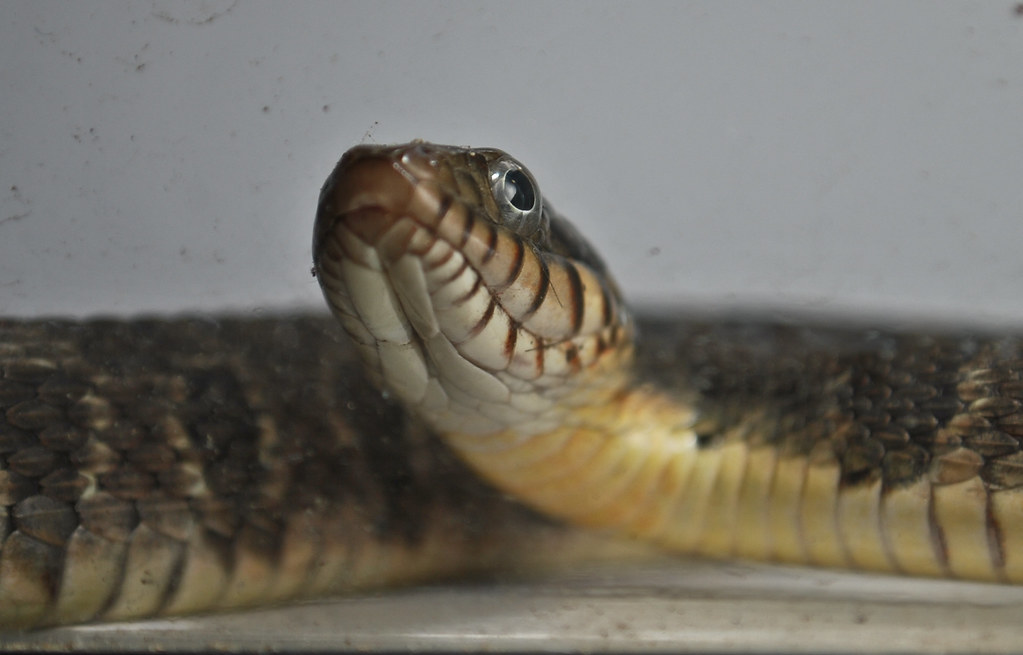
The Plain-bellied Water Snake (Nerodia erythrogaster), formerly known as the Yellowbelly Water Snake, showcases remarkable regional variation across its extensive range from the Midwest to the Gulf Coast. As its name suggests, this species features a distinctive unmarked belly that ranges in color from bright yellow to red or even solid gray, depending on the subspecies. Four recognized subspecies exist: the yellowbelly, redbelly, copper-bellied, and green water snake, each adapted to specific regional conditions within the species’ broader range.
Unlike many water snakes that rarely venture far from water, Plain-bellied Water Snakes frequently travel considerable distances over land, sometimes being found in surprisingly dry habitats while moving between water sources. These adaptable serpents consume a varied diet including fish, amphibians, and crayfish, and can reach lengths of 30-48 inches, with females typically growing larger than males.
The Brown Water Snake: Master Fisherman of the Southeast
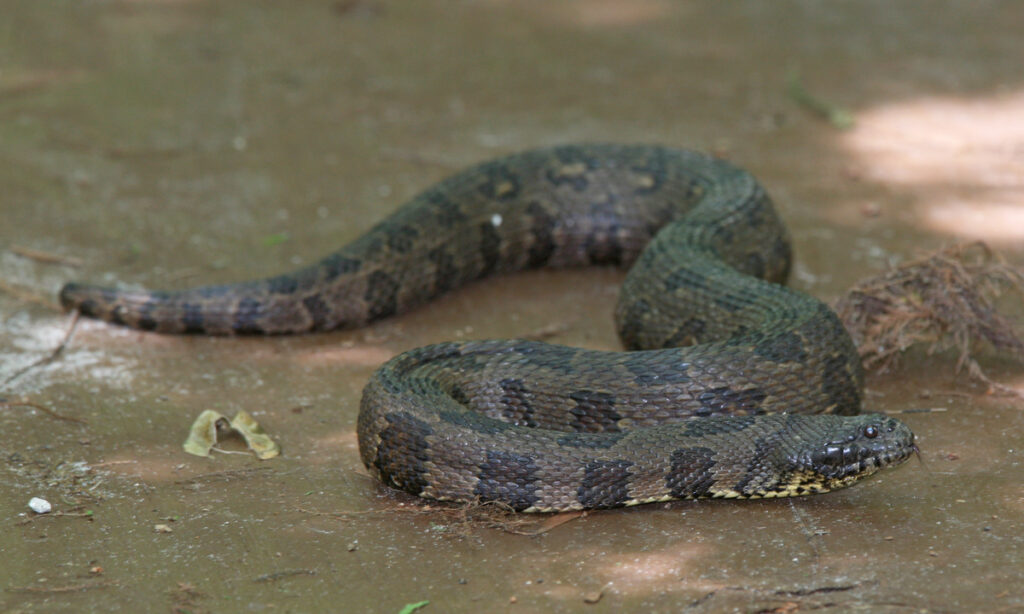
The Brown Water Snake (Nerodia taxispilota) has evolved specialized feeding strategies that make it perhaps the most accomplished fish-hunter among American water snakes. This large, heavy-bodied snake—reaching lengths of 30-60 inches—inhabits rivers, streams, and swamps throughout the southeastern coastal plain from southeastern Virginia to Florida and west to eastern Louisiana. Brown Water Snakes possess particularly pronounced keeled scales that create a rough, non-reflective texture, helping them remain camouflaged while hunting from their favorite perches on branches overhanging water.
Their distinctive appearance includes a row of large, square blotches down the back and smaller alternating blotches along the sides, all set against a brown background that provides excellent camouflage among tree branches. These snakes have perfected the hunting technique of hanging from branches to grab passing fish, sometimes completely submerging themselves and anchoring their tails to vegetation while reaching underwater to extract fish from crevices or capture them mid-swim.
The Salt Marsh Snake: Specialist of Coastal Habitats
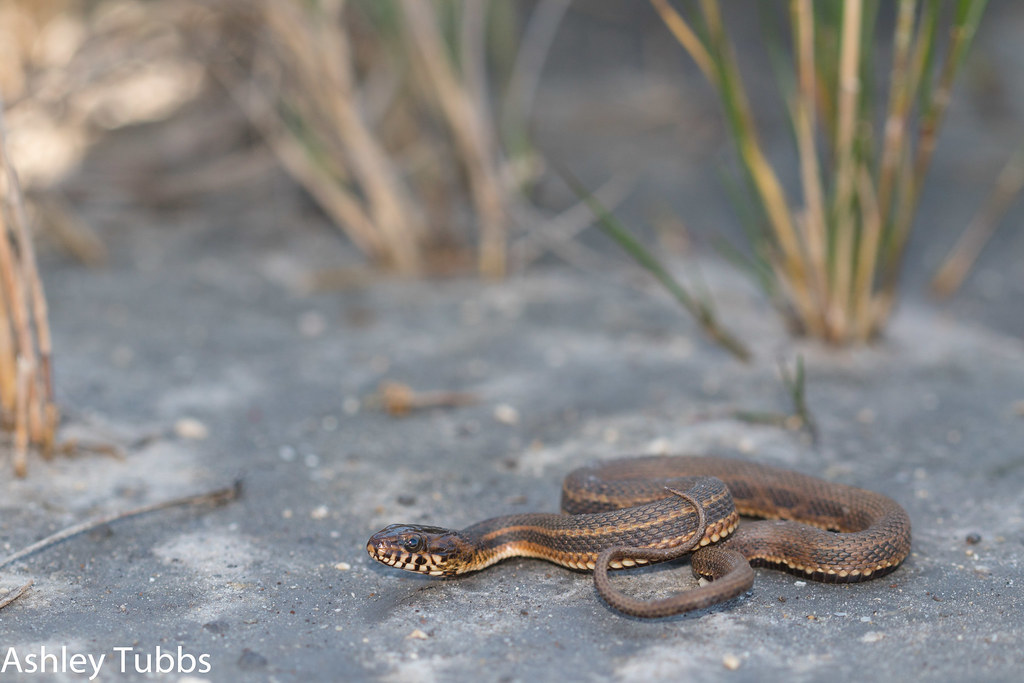
The Salt Marsh Snake (Nerodia clarkii) represents a fascinating evolutionary adaptation among water snakes, having developed specialized physiological mechanisms to thrive in brackish and saltwater environments that would be toxic to most freshwater reptiles. These relatively small water snakes, typically reaching only 15-30 inches in length, inhabit coastal areas along the Gulf of Mexico and parts of the Atlantic coast, where they hunt primarily in salt marshes, mangrove swamps, and tidal flats. Three distinct subspecies are recognized: the Gulf Salt Marsh Snake, the Atlantic Salt Marsh Snake (federally threatened), and the Mangrove Salt Marsh Snake, each adapted to slightly different coastal environments within their range.
Salt Marsh Snakes possess specialized glands near their cloaca that help excrete excess salt, allowing them to maintain proper internal salt balance despite living in marine environments. Their diet consists primarily of small fish and invertebrates found in shallow coastal waters, and they are especially active during low tide when prey becomes concentrated in tidal pools.
The Mississippi Green Water Snake: Emerald Swimmer of the Deep South
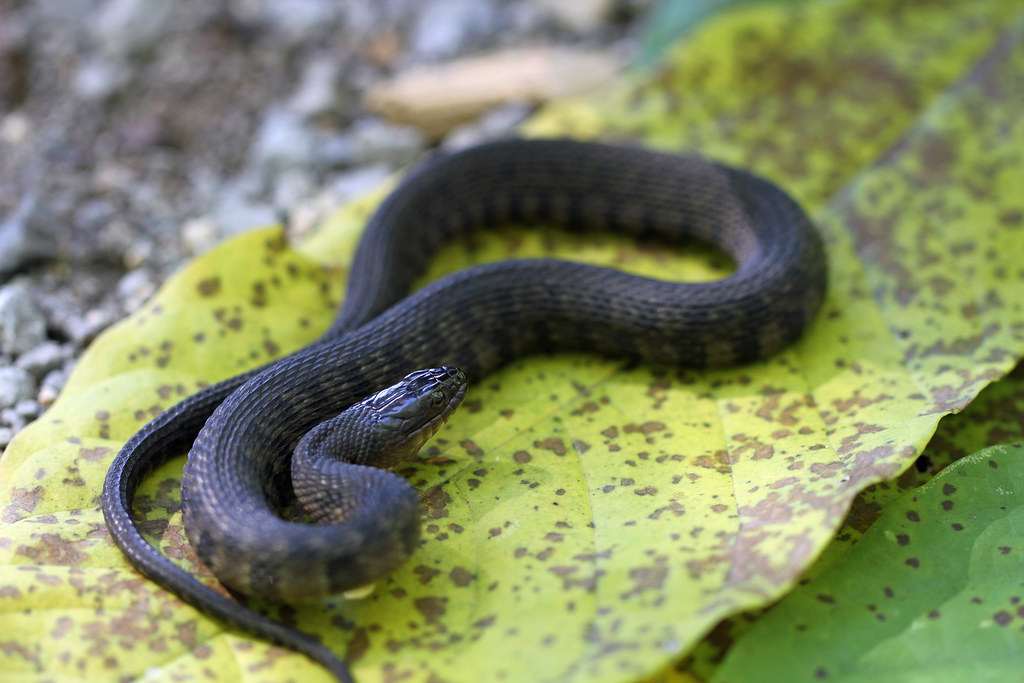
The Mississippi Green Water Snake (Nerodia cyclopion) stands out among America’s water snakes with its distinctive olive to dark green coloration that provides excellent camouflage in the algae-rich waters of its southern habitats. This medium to large water snake, reaching lengths of 30-55 inches, inhabits the lower Mississippi River Valley and Gulf coastal plain from southern Illinois and Missouri south to Texas and east to western Florida. Unlike many water snakes that frequently bask in visible locations, Mississippi Green Water Snakes tend to be more secretive and primarily nocturnal, making them less frequently encountered despite their considerable size.
These highly aquatic snakes rarely venture far from water and show a particular preference for permanent water bodies with abundant vegetation, such as cypress swamps, bayous, and sluggish streams. Their diet consists primarily of fish and amphibians, which they hunt using ambush techniques in shallow water or by actively searching underwater, sometimes remaining submerged for extended periods.
The Copper-bellied Water Snake: A Conservation Priority

The Copper-bellied Water Snake (Nerodia erythrogaster neglecta), a subspecies of the Plain-bellied Water Snake, has become a focus of conservation efforts due to its declining populations across the Midwest. This distinctive snake, characterized by its solid dark back contrasting sharply with a bright reddish-orange to copper-colored belly, once ranged widely through wetlands in Michigan, Indiana, Ohio, Kentucky, and Tennessee. Today, the northern population segment (north of the Ohio River) is federally listed as threatened, with remaining populations highly fragmented and vulnerable to further decline.
Copper-bellied Water Snakes require a complex mosaic of wetland habitats, including seasonal wetlands, forested swamps, and the upland corridors connecting them, making them particularly vulnerable to wetland drainage and habitat fragmentation. Unlike many water snakes that rarely leave water, this subspecies frequently travels long distances (up to a mile) over land between wetlands, utilizing multiple wetland types throughout the year as water levels and prey availability change. Conservation efforts focus on protecting not just individual wetlands but entire wetland complexes and the terrestrial corridors between them.
The Queen Snake: Specialized Hunter of Freshly-Molted Crayfish
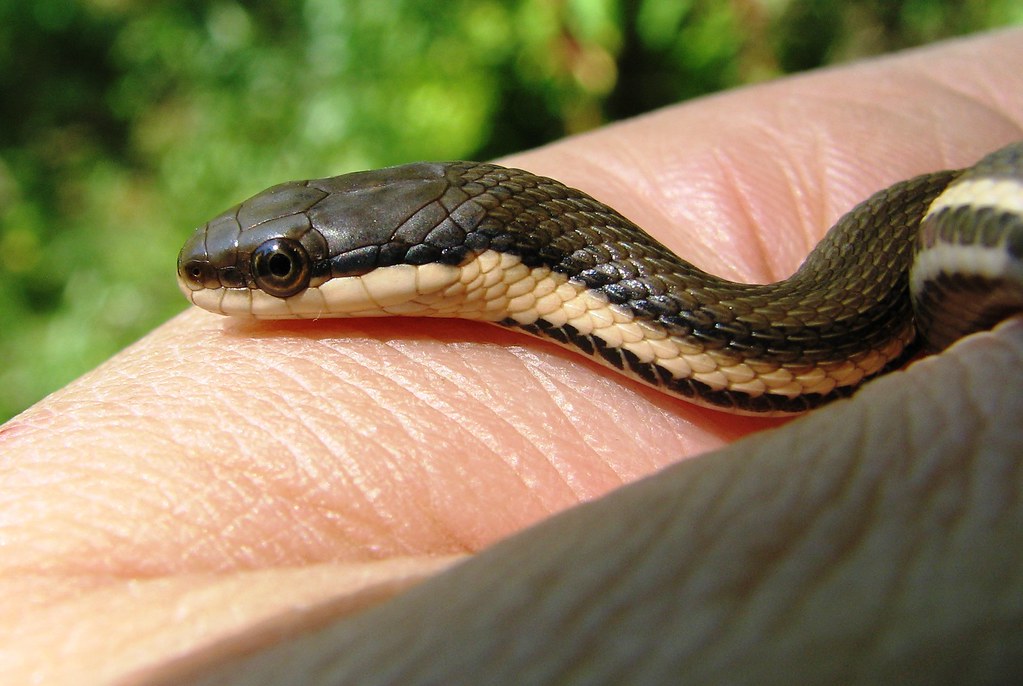
The Queen Snake (Regina septemvittata), while technically belonging to a genus distinct from Nerodia, represents one of America’s most specialized aquatic serpents with feeding habits unlike any other water snake. These slender, medium-sized snakes (typically 15-24 inches long) inhabit clear, rocky streams across the eastern United States from New York to Wisconsin and south to Georgia and Alabama. Queen Snakes display perhaps the most specialized diet of any North American water snake, feeding almost exclusively on freshly-molted crayfish when they are soft and vulnerable.
This dietary specialization is reflected in their physical adaptations, including a narrow head and jaw structure ideal for extracting crayfish from rocky crevices, and behavioral tendencies to search methodically under rocks where molting crayfish hide. Their appearance is distinctive, with an olive-brown to gray-brown back featuring a pale yellow stripe down the center and bright yellow or cream stripes along the lower sides, plus a yellow belly with four brown stripes running lengthwise.
The Graham’s Crayfish Snake: Master of Wetland Invertebrates
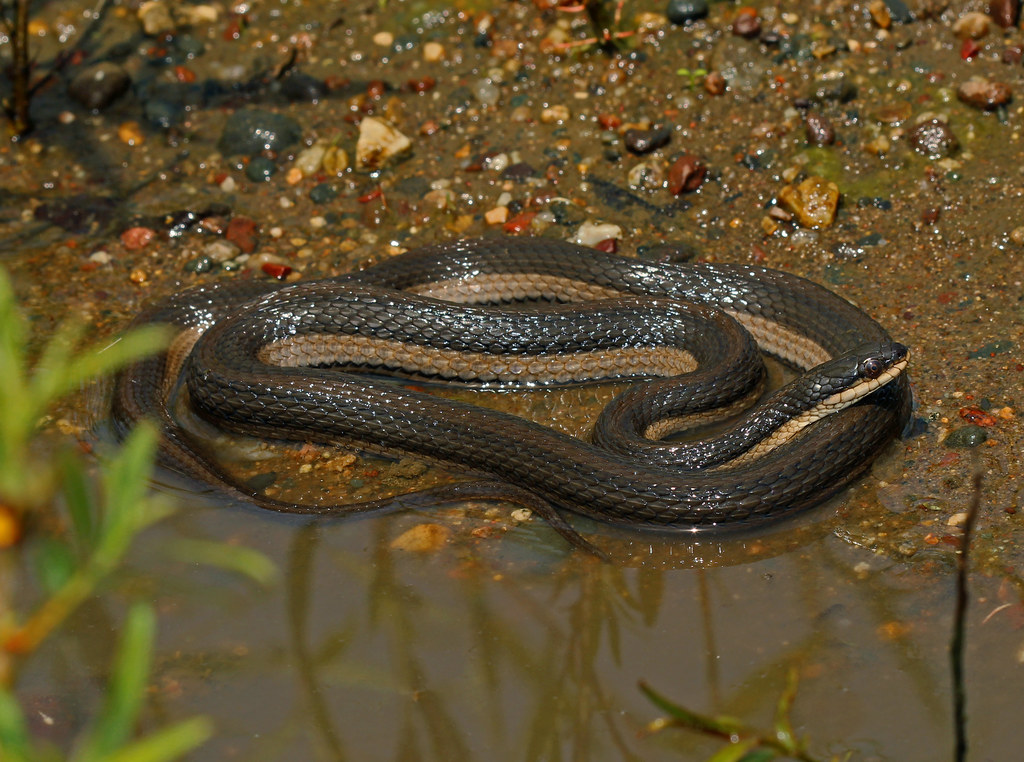
Graham’s Crayfish Snake (Regina grahamii), another member of the Regina genus, represents a fascinating specialization among America’s water snakes with its narrow ecological niche focused on hunting crayfish and other aquatic invertebrates. These relatively small water snakes, typically reaching only 18-28 inches in length, inhabit quiet waters across the central United States from Wisconsin to Texas, including ponds, marshes, ditches, and sluggish streams with muddy bottoms. Their slender build and relatively small head reflect their specialized diet, with physical adaptations that help them extract crayfish from burrows and crevices where other predators cannot reach.
Graham’s Crayfish Snakes display a distinctive appearance with a brown to olive-brown back, a cream-colored lateral stripe on each side, and a bright yellow to orange belly that may feature a central row of small dark spots. Unlike the more confrontational Nerodia water snakes, Graham’s Crayfish Snakes rarely bite when handled, instead relying primarily on secretive behavior and the production of a musky defensive odor when threatened.
The Glossy Swamp Snake: Enigmatic Dweller of Southern Wetlands
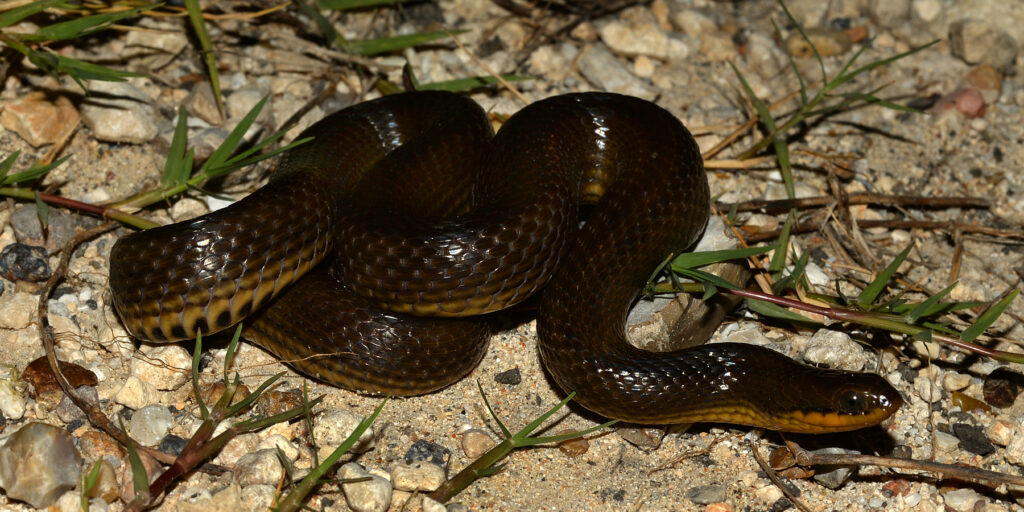
The Glossy Swamp Snake (Liodytes rigida), formerly classified in the genus Regina, represents one of America’s most specialized and least-known aquatic serpents. These small to medium-sized snakes, typically reaching only 16-24 inches in length, inhabit the coastal plain of the southeastern United States from Virginia to eastern Texas, where they favor still or slow-moving waters with abundant vegetation, particularly cypress swamps and marshy areas. As their name suggests, Glossy Swamp Snakes possess distinctively smooth, glossy scales that give them a shiny appearance unlike the heavily keeled scales of most water snakes, reflecting their different evolutionary pathway.
Two subspecies exist: the Gulf Glossy Snake and the Eastern Glossy Snake, both characterized by their secretive nature and specialized diet consisting primarily of freshwater leeches, aquatic worms, and occasionally small fish or amphibians. Their behavior remains poorly studied compared to most water snakes, partly due to their cryptic habits and tendency to remain in densely vegetated wetland interiors rarely visited by researchers.
Conservation Challenges Facing U.S. Water Snakes
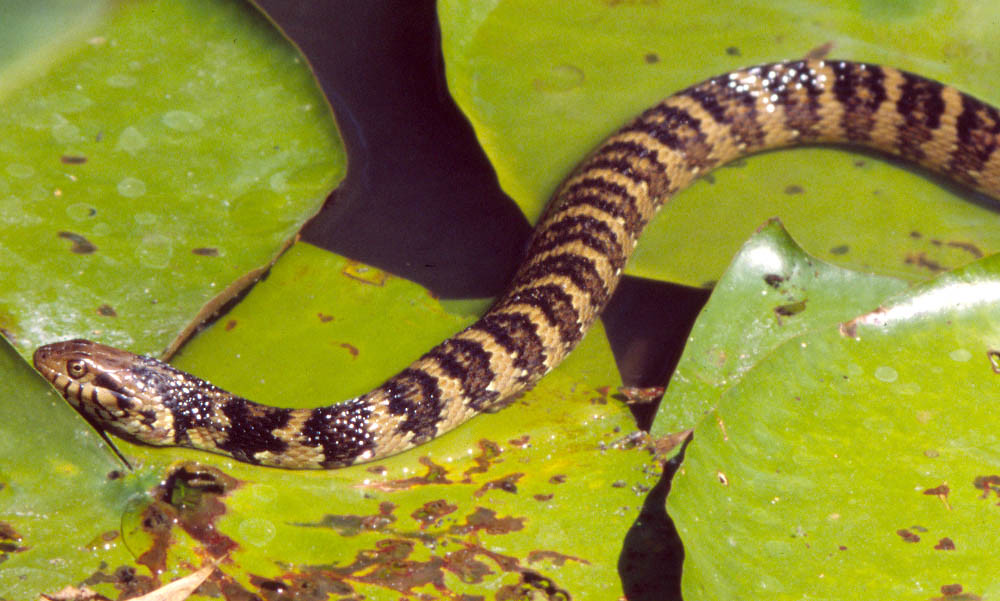
America’s diverse water snakes face numerous conservation challenges in the 21st century, with habitat loss and degradation standing as the most significant threats across all species. Wetland drainage for agriculture and development has eliminated vast areas of suitable habitat, while water pollution from agricultural runoff, industrial sources, and urban development degrades remaining aquatic ecosystems and can directly impact snake health or reduce prey availability. Climate change presents emerging threats, potentially altering water levels, temperature regimes, and prey abundance in ways that could fundamentally change habitat suitability for specialized species.
Misidentification remains another persistent problem, as many water snakes are killed by humans who mistake them for venomous cottonmouths or water moccasins, despite their beneficial ecological roles in controlling fish, amphibian, and invertebrate populations. Road mortality also takes a significant toll, particularly on species like the Copper-bellied Water Snake that regularly travel overland between wetland habitats, highlighting the need for wildlife crossing structures in key areas.
Water Snakes in Human Culture and Education
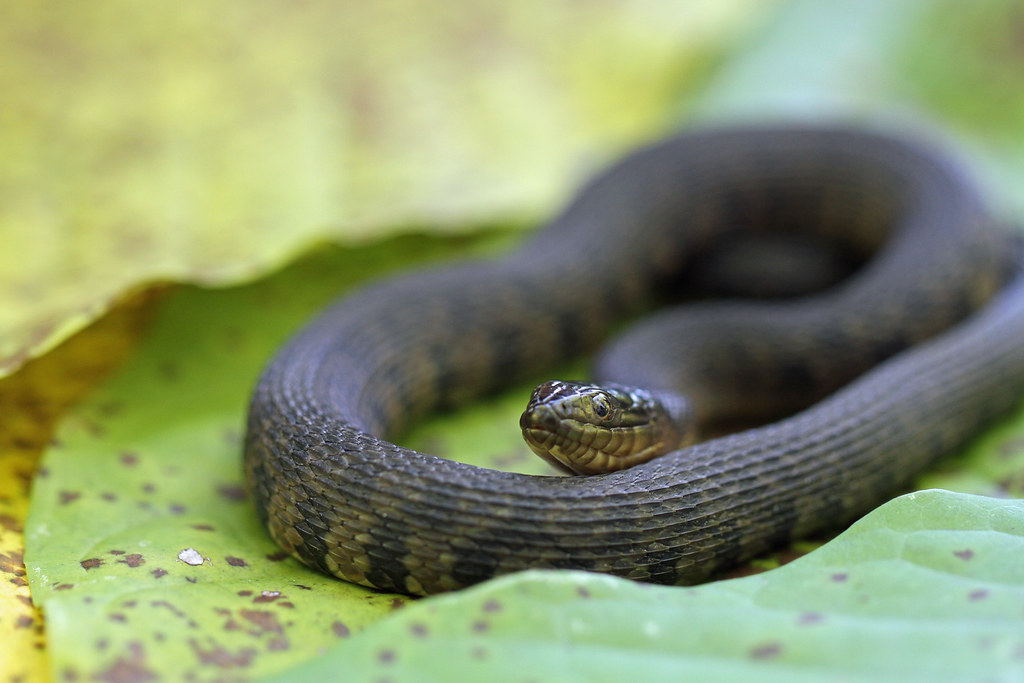
Water snakes have played complex roles in American cultural attitudes toward wildlife, often serving as subjects of fascination, fear, and misconception. Indigenous cultures across North America frequently incorporated water snakes into their mythologies and natural knowledge systems, generally recognizing their ecological importance rather than demonizing them. In contemporary times, water snakes have become important educational ambassadors in nature centers, zoos, and wildlife education programs, where their adaptations and ecological roles help illustrate broader concepts about wetland ecosystems and biodiversity.
Citizen science initiatives involving water snakes, such as reporting sightings of rare species or participating in monitoring programs, provide valuable data for researchers while connecting people more deeply with their local ecosystems. Despite persistent misconceptions, attitudes toward these non-venomous reptiles appear to be gradually improving as outdoor enthusiasts and waterfront property owners gain better understanding of water snakes’ beneficial roles in controlling populations of fish and amphibians, including potential pest species.
Conclusion: Appreciating America’s Aquatic Serpents
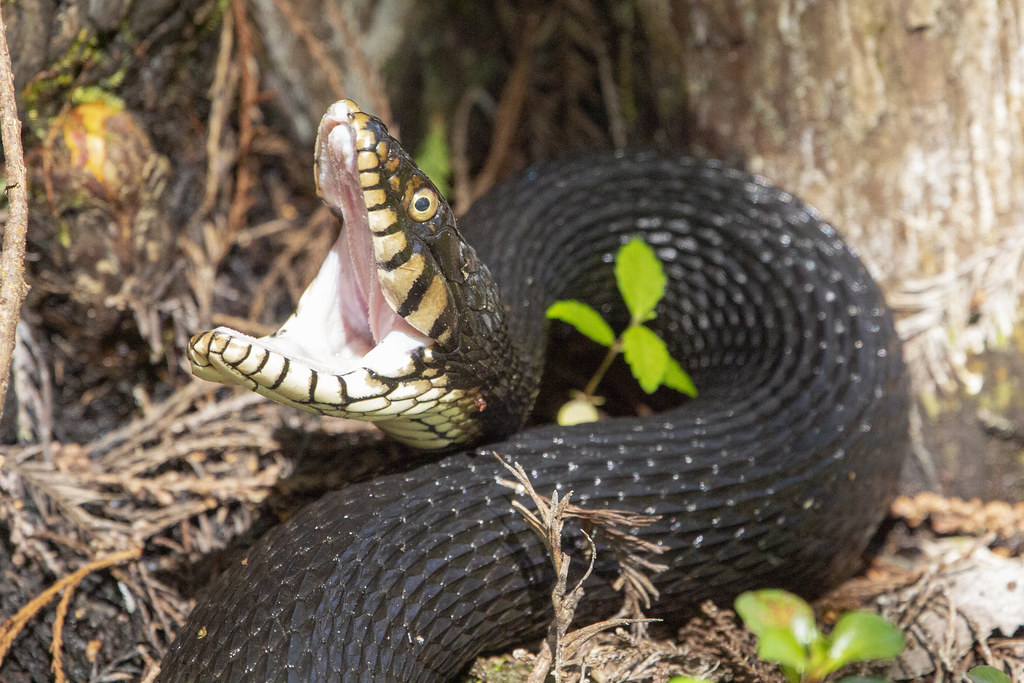
The diverse water snakes of the United States represent remarkable examples of evolutionary adaptation to aquatic environments, with specialized behaviors, physiological mechanisms, and ecological niches that have allowed them to thrive across the continent’s varied waterways. From the salt-tolerant glands of marsh snakes to the specialized hunting techniques of crayfish-eating species, these reptiles showcase nature’s ingenuity in filling ecological niches. While often misunderstood and sometimes feared, water snakes serve critical roles in their ecosystems as both predators and prey, forming important links in aquatic food webs and contributing to the health and balance of wetland environments.
As we face continuing losses of wetland habitats and growing impacts from climate change, increased understanding and appreciation of these fascinating reptiles will be essential for ensuring their conservation. By recognizing the value and unique adaptations of America’s water snakes, we gain not only scientific knowledge but also a deeper connection to the complex and interdependent ecosystems they inhabit.

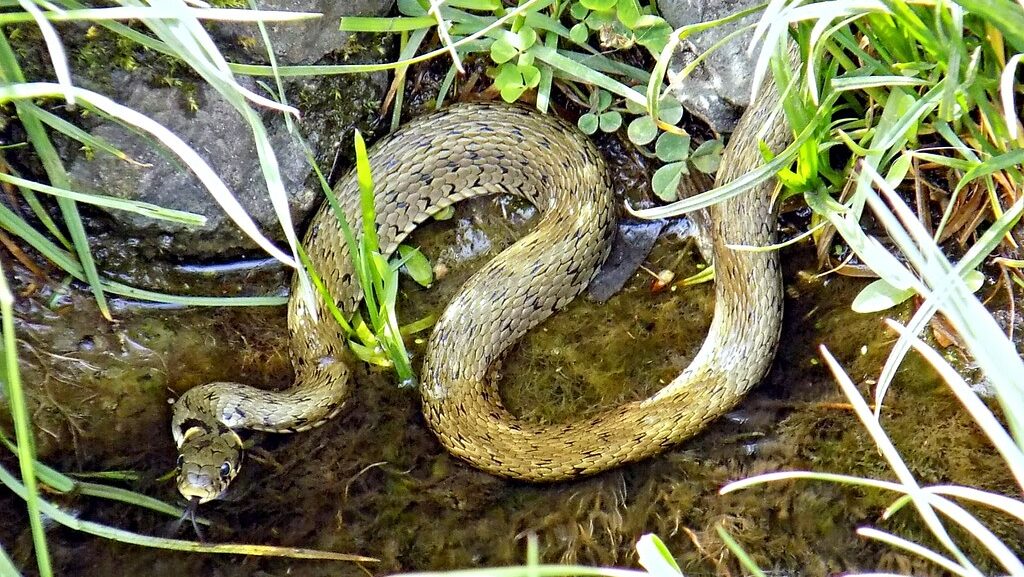

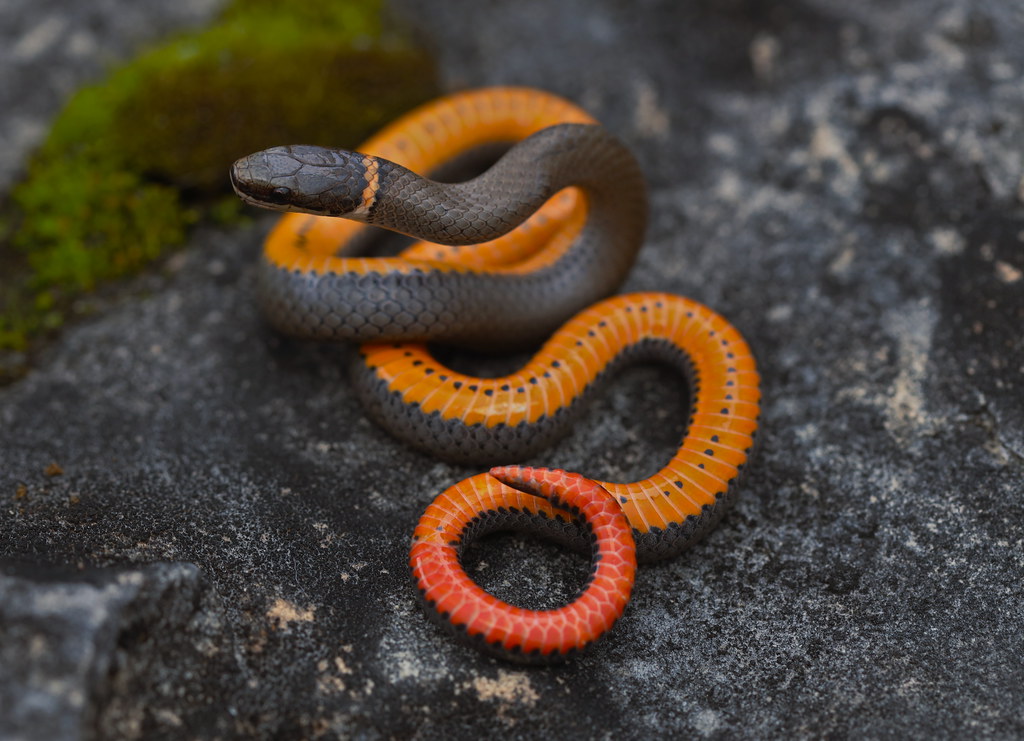
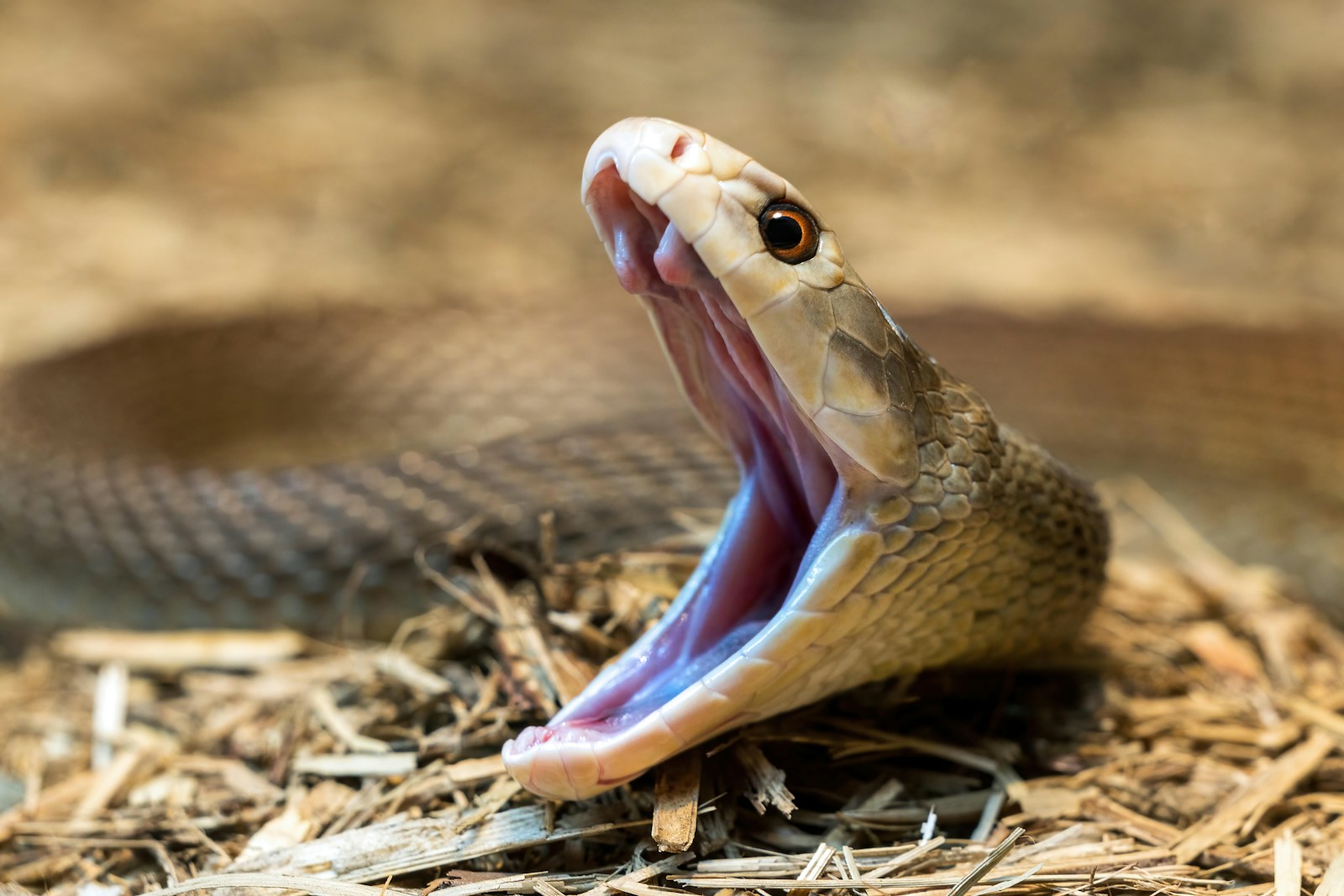
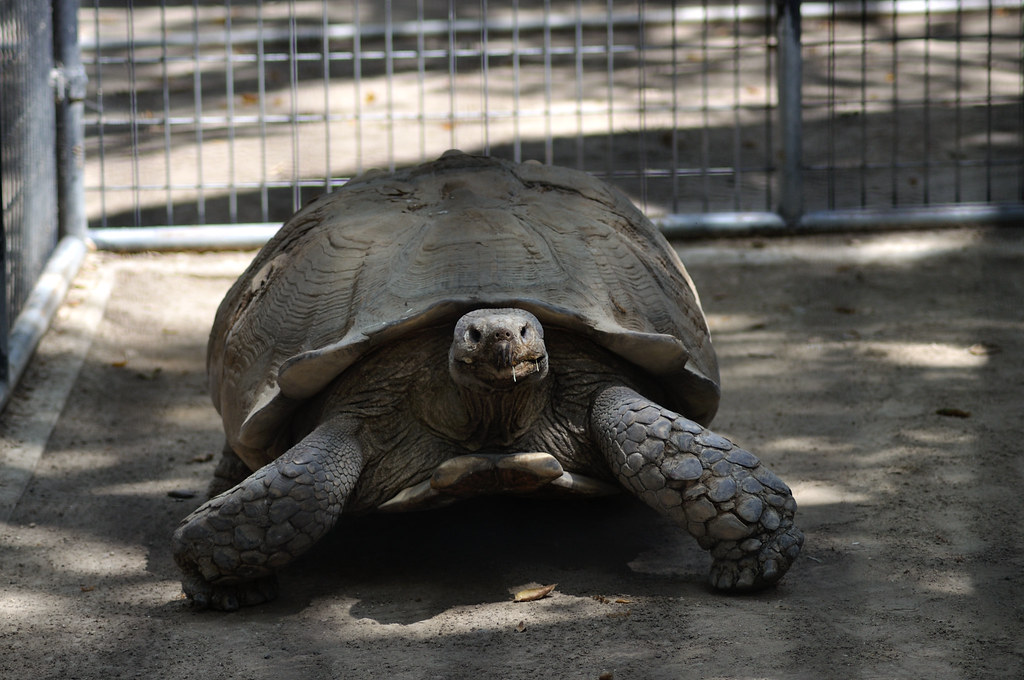
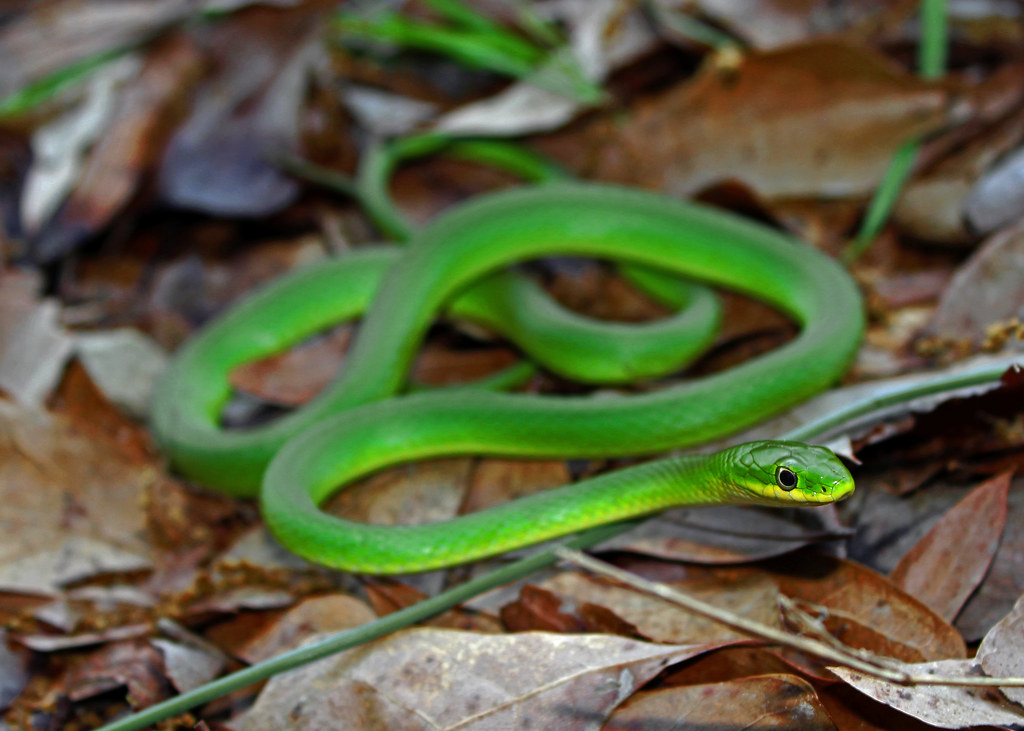
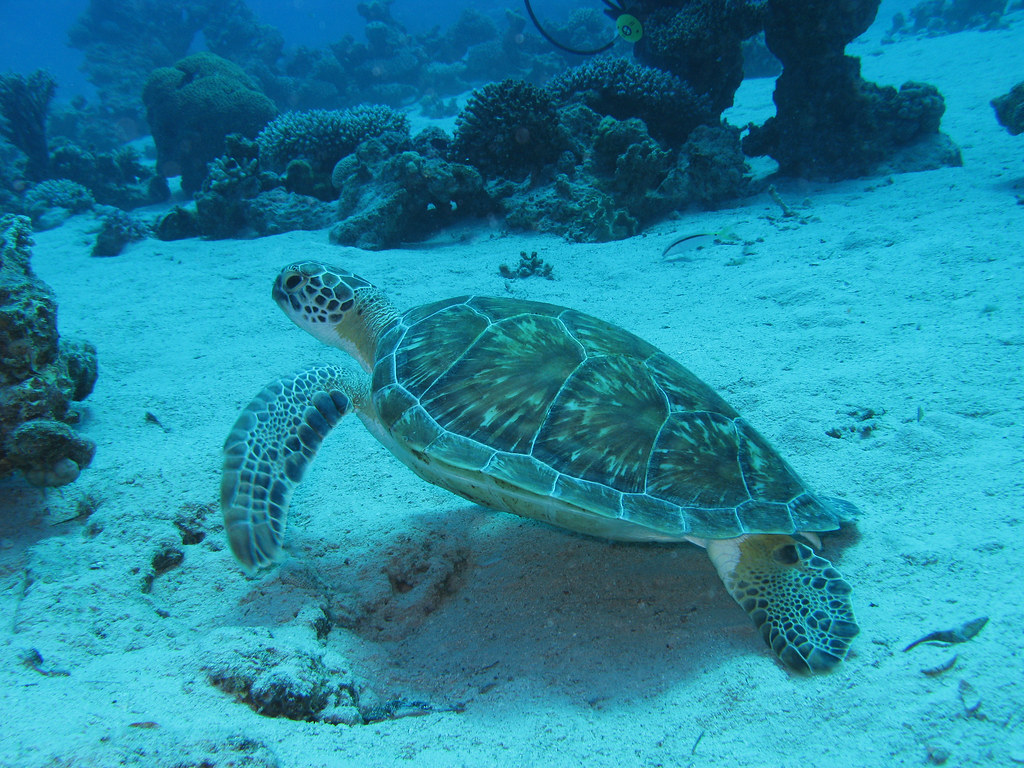
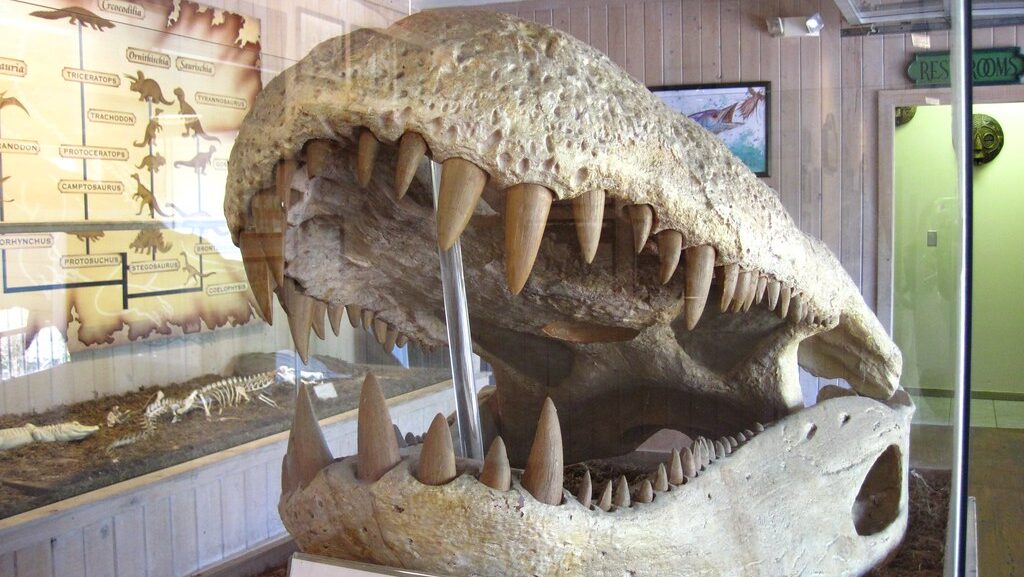
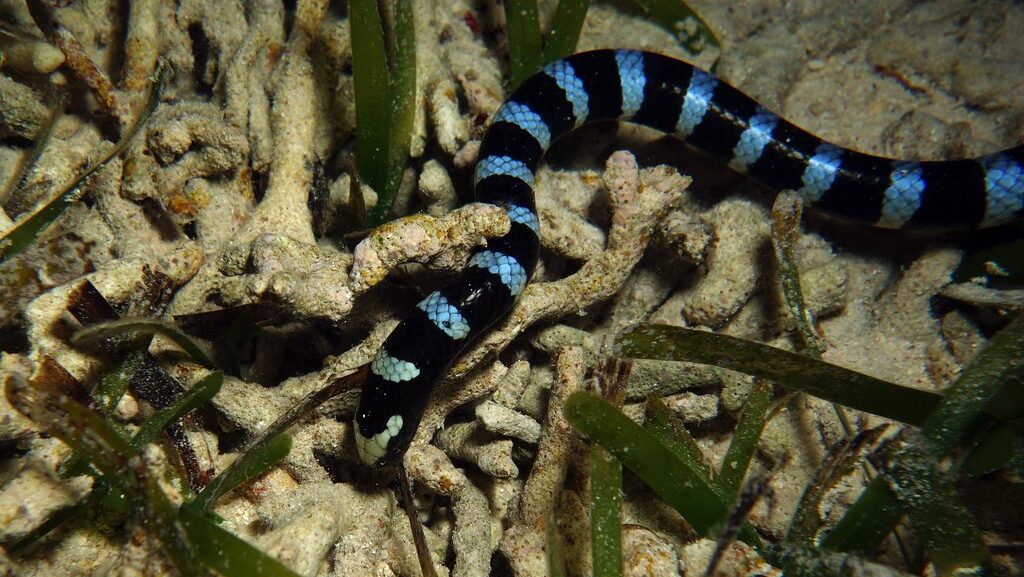
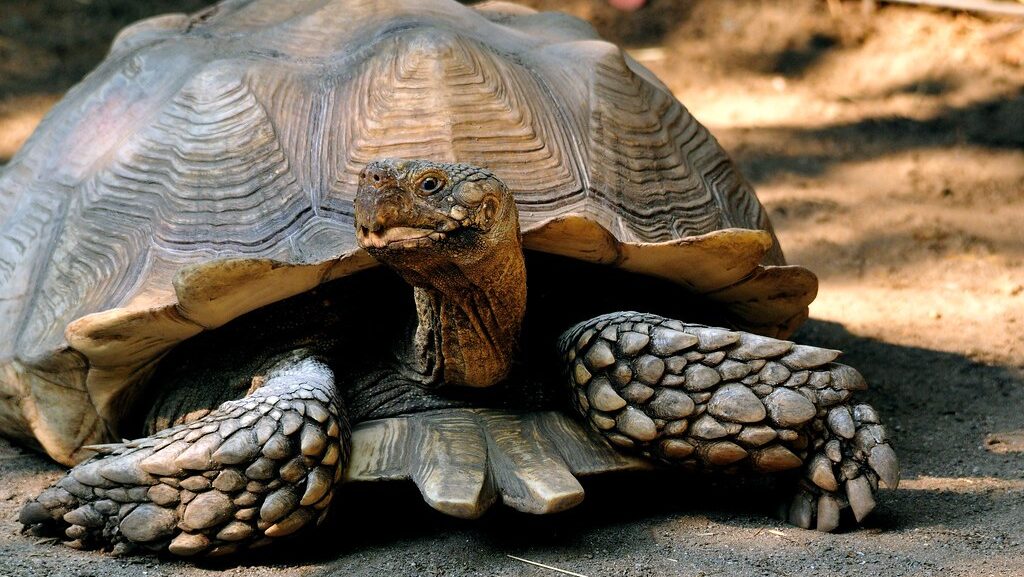




Leave a Reply